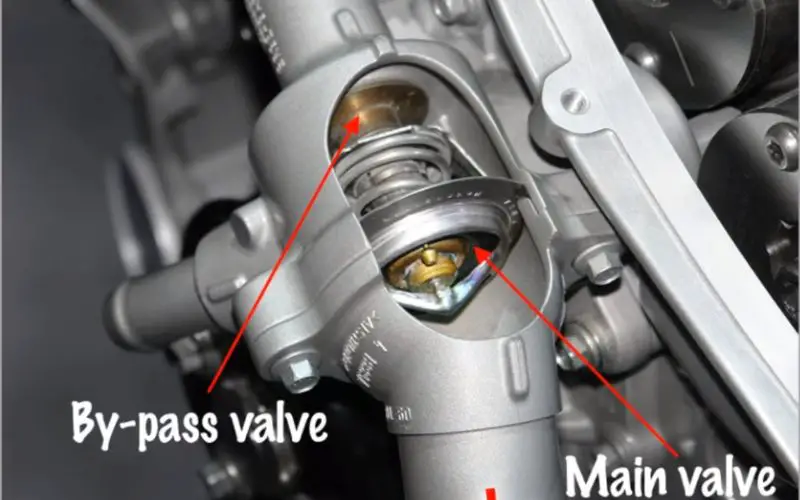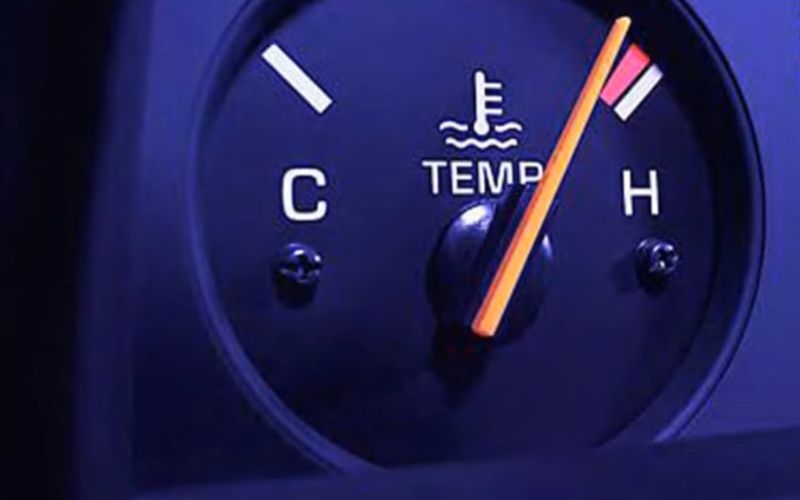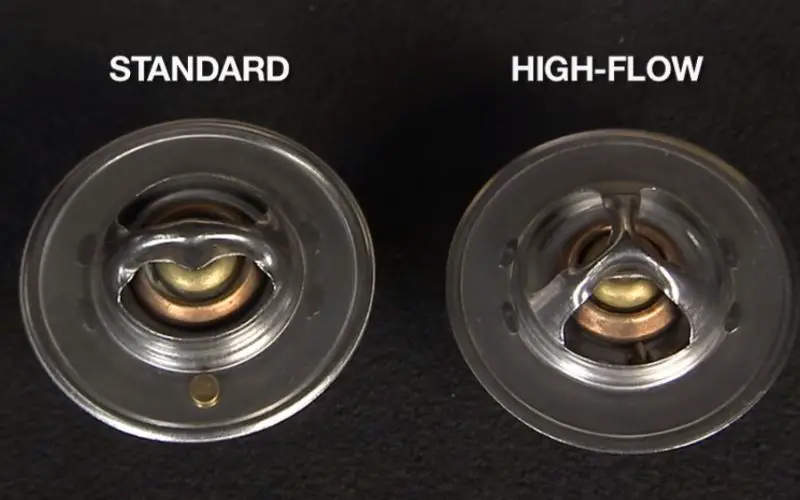Engine Temperature Too Low In My Jeep main cause of thermostat issues like wrongly installed or malfunctioning.
If you can work on the thermostat correctly then you can solve this issue.
Engine temperature too low is not a serious issue for your Jeep engine. But this can cause you so many other issues if you don’t take this as a serious issue.
Right after getting the trouble code P0128 on your OBD, you have to work on this.
But how to fix too low engine temperature on your Jeep engine and what are the precautions to take?
This discussion will have everything. So, without any delay, let’s start the discussion.
Why Is My Jeep Engine Temperature Too Low – Reasons
The reason for Jeep’s engine temperature being too low is a malfunctioning or incorrectly installed thermostat. But you need to know them in detail so that you can troubleshoot this issue at home.
Stuck Open Thermostat

One of the primary reasons for your engine temperature being too low is that the thermostat in your Jeep’s cooling system has become stuck in the open position.
The thermostat is a crucial component that regulates the flow of coolant through your engine to maintain an optimal operating temperature.
If it remains open, the engine receives too much coolant, and it fails to reach the desired operating temperature.
Incorrect Thermostat Temperature

It is possible that either your thermostat was installed incorrectly, or it is the wrong temperature rating. The ideal thermostat for your Jeep is typically a 195-degree Fahrenheit model.
If a lower-temperature thermostat, such as a 165°F or 180°F, has been mistakenly installed, it will cause the engine to run cooler than intended.
Avoid “Failsafe” Thermostats

Thermostats are designed to fail in the open position in case of a problem, which can lead to the engine running too cold.
They are not suitable for maintaining the proper operating temperature of your engine.
To address the issue and bring your engine temperature back to normal, it is recommended to replace the existing thermostat with the correct standard 195°F thermostat from a reputable brand like Stant.
Ensure that it is not a “failsafe” type thermostat.
This should help regulate the flow of coolant, allowing your engine to warm up and operate at the correct temperature, which is essential for efficient combustion, emissions control, and overall engine health.
How To Fix These Issues? Step By Step Solutions
To fix the issues related to your Jeep’s engine running too cool, follow these step-by-step solutions for each potential reason:
Reason 1: Stuck Open Thermostat
- Gather the Necessary Tools and Parts: You’ll need a new thermostat of the correct temperature rating (195°F for most Jeeps), a new gasket, a socket set, a torque wrench, and coolant.
- Safety First: Ensure the engine is cool before you begin working. Disconnect the negative battery terminal to avoid electrical mishaps.
- Locate the Thermostat Housing: Consult your Jeep’s service manual or online resources to locate the thermostat housing. It’s typically connected to the upper radiator hose.
- Drain Coolant: Place a catch pan under the radiator, remove the radiator cap, and carefully drain some coolant to below the level of the thermostat housing. This minimizes spillage.
- Remove the Thermostat Housing: Carefully remove the bolts securing the thermostat housing. Once the housing is loose, you can access the thermostat.
- Replace the Thermostat: Take out the old thermostat and replace it with the new 195°F thermostat. Ensure the spring-side faces into the engine. Use a new gasket when reassembling.
- Tighten the Housing: Torque the thermostat housing bolts to the manufacturer’s specifications.
- Refill Coolant: Add coolant until it reaches the recommended level. Start the engine and let it run for a few minutes to allow air bubbles to escape. Top up the coolant as needed.
- Check for Leaks: After a short test drive, check for any coolant leaks and recheck the coolant level.
- Reconnect the Battery: Reconnect the negative battery terminal and ensure all connections are secure.
Reason 2: Incorrect Thermostat Temperature
- Verify the Correct Thermostat: Ensure you have a 195°F thermostat of the correct type for your Jeep.
- Follow the Steps for Stuck Open Thermostat: Follow the same steps outlined for the stuck open thermostat issue to replace the thermostat.
Reason 3: Avoid “Failsafe” Thermostats
- Select the Right Thermostat: Make sure the replacement thermostat is not a “failsafe” type, as these are prone to sticking open. Choose a standard thermostat with a 195°F rating.
- Follow the Steps for Stuck Open Thermostat: Replace the thermostat following the same steps as outlined for the stuck open thermostat issue.
After addressing these issues, your Jeep’s engine should run at the correct temperature, ensuring optimal performance, fuel efficiency, and emissions control. If it is not happening, talk to your dealer.
Can You Drive With Low-Temperature Light On?
It’s not recommended to drive your vehicle with the low-temperature light on for an extended period.
The low-temperature warning light typically indicates that your engine is not reaching the optimal operating temperature, which can lead to several issues:
- Reduced Fuel Efficiency: When your engine is too cold, it doesn’t operate efficiently, leading to increased fuel consumption. This can be especially noticeable during short trips where the engine doesn’t have a chance to warm up properly.
- Increased Emissions: A cold engine produces higher emissions, which can contribute to air pollution and may cause your vehicle to fail emissions tests in some regions.
- Reduced Engine Performance: Operating with a cold engine can result in reduced power and performance, as the engine doesn’t operate at its designed efficiency.
- Potential Engine Damage: In extreme cases, driving with a consistently cold engine can lead to engine damage, such as increased wear and tear on internal components.
While it may be safe to drive your vehicle for a short distance with the low-temperature light on, it’s crucial to address the issue as soon as possible by following the steps outlined in the previous responses.
Conclusion
A low-temperature warning light on your vehicle’s dashboard should not be ignored. It signals that your engine is not operating at its ideal temperature, which can lead to various performance and efficiency issues. Work on them as soon as possible.
Also, do regular maintenance of your vehicle. Regular maintenance and addressing temperature-related issues promptly will keep your vehicle running smoothly and efficiently.


Leave a Reply